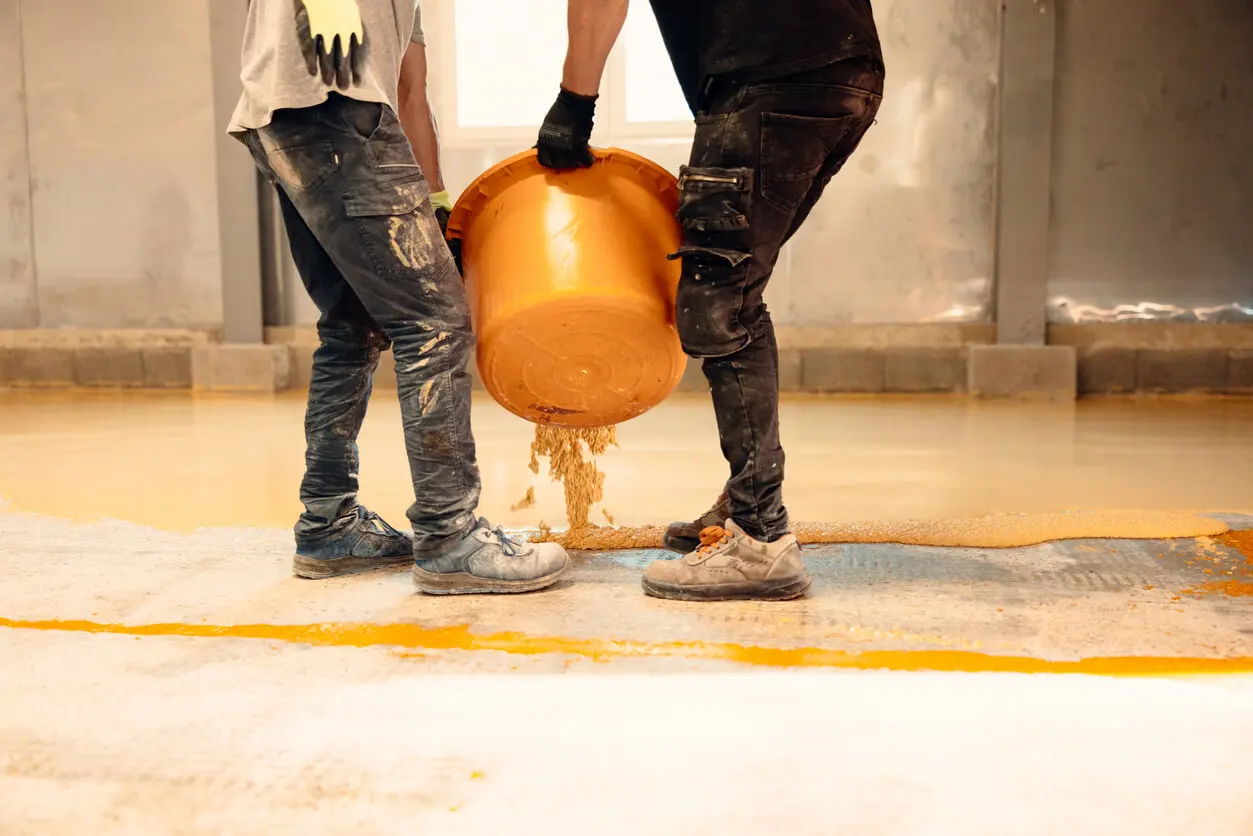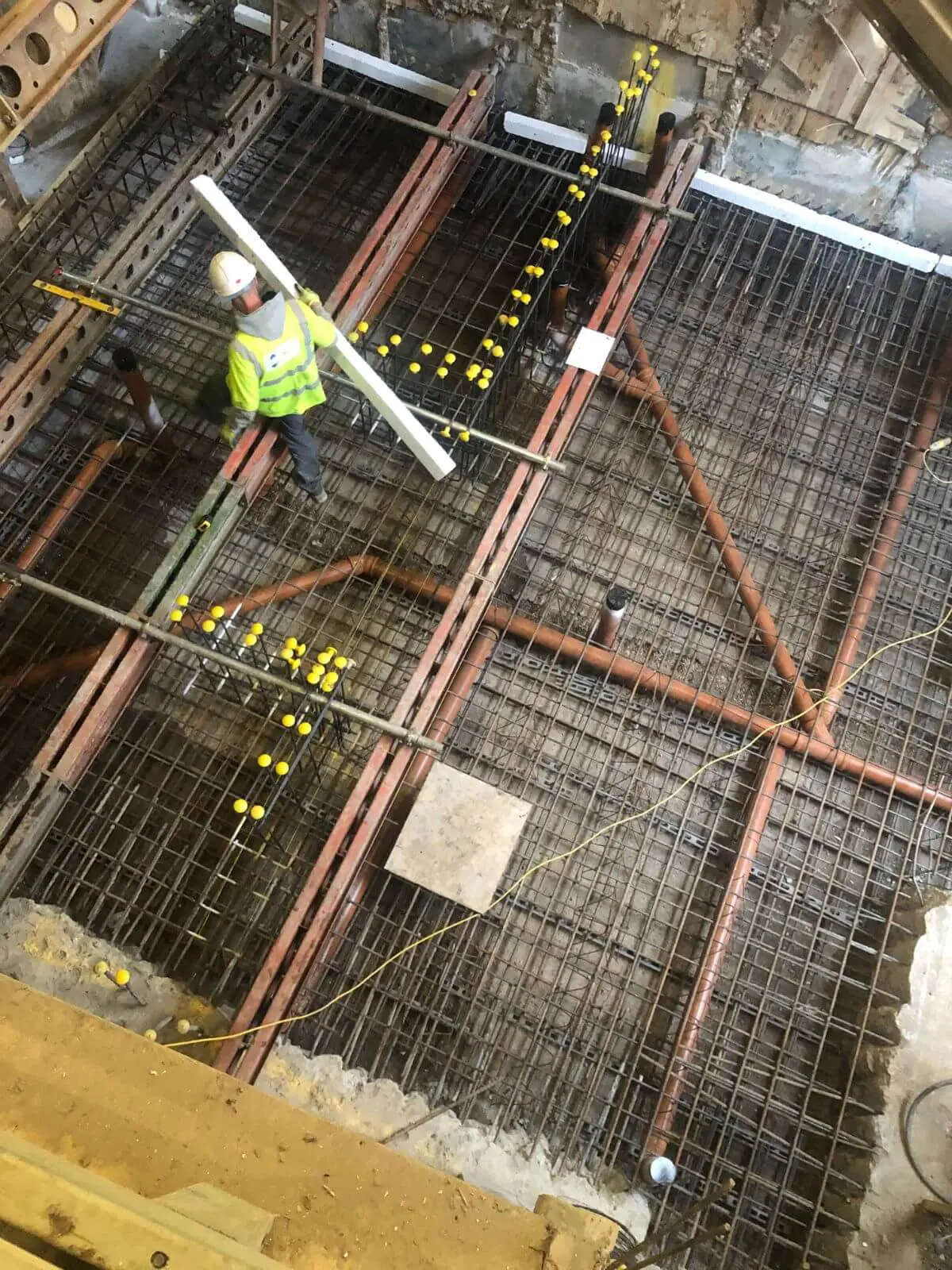
Waterproofing Your Basement: Essential Steps to Take Before Starting the Build
Building a basement is a significant investment and ensuring that it remains dry and protected...
Water damage is one of the most common issues faced by property owners with below-ground spaces like cellars and basements, especially in a city like London, where unpredictable weather and high water tables can make moisture ingress a real concern. If you’re dealing with a damp or leaky cellar, tanking is a tried and tested method that can prevent water from penetrating your space, keeping it dry and usable.
At BH Basements, we’ve been doing this for 35 years. Here’s all we got to say about tanking a cellar to prevent water ingress, best practices for waterproofing older buildings in London, and how basement tanking safeguards against moisture and dampness.
Tanking a cellar involves applying a waterproof barrier to the walls and floors, creating a sealed space that prevents water from penetrating the building. This is particularly important in London, where cellars are often exposed to fluctuating water tables and frequent rainfall. These are the most common tanking techniques used to keep your cellar dry:
Internal tanking is one of the most effective techniques for preventing water ingress in cellars. This method involves applying a waterproof slurry or membrane to the inside walls and floors of the cellar, creating an impermeable barrier that prevents water from seeping through.
External tanking is another technique used to prevent water ingress, although it can be more challenging to implement in existing buildings. This method involves applying a waterproof membrane or coating to the exterior of the cellar walls, stopping water before it even reaches the internal structure.
While not strictly a tanking method, cavity drainage systems are often used alongside tanking to manage water ingress effectively. In this system, drainage channels are installed to collect and direct any water that enters the space to a sump pump, which then removes it from the cellar.
London is home to many older buildings, and waterproofing these structures comes with its own unique set of challenges. When tanking a cellar in an older property, it’s important to consider the building’s age, materials, and existing conditions to determine the best course of action.
Before starting the process of basement tanking, it is crucial to assess the condition of the building. Older buildings often have different types of foundations and building materials that may require specific approaches to waterproofing.
Older buildings in London often require careful consideration when selecting a tanking method. In many cases, internal tanking is the preferred solution as it does not require excavation and is less invasive compared to external methods.
For effective tanking of a cellar in an older building, it’s advisable to work with specialist contractors who have experience in waterproofing heritage properties. Proper installation is key to achieving a waterproof barrier that will stand the test of time, and professionals can help ensure that the chosen solution is executed correctly.
Moisture and damp can have serious consequences for the health of your building and its occupants. Basement tanking is an effective way to safeguard against these issues, ensuring that your cellar remains dry, usable, and free from the harmful effects of water ingress.
Water ingress can lead to significant structural damage over time. Moisture can weaken masonry, cause wooden beams to rot, and lead to cracks and movement in the foundation. By tanking a cellar, you create a waterproof barrier that prevents water from penetrating the walls and floors, reducing the risk of structural damage.
Tanking helps maintain the integrity of the building’s structure by preventing water from reaching vulnerable areas. This is particularly important in older buildings, where the materials may already be weakened by age.
Damp environments are a breeding ground for mould and mildew, which can cause health issues for occupants, particularly those with respiratory conditions. By tanking your cellar, you can ensure that the space remains dry and healthy, reducing the risk of damp-related health problems.
A dry cellar helps improve the overall air quality in the building by reducing the presence of allergens and mould spores. This is particularly important if the cellar is used as a living space or storage area.
A properly tanked cellar adds value to your property by providing additional dry, usable space. Whether you use the cellar for storage, as a utility room, or even as additional living space, basement tanking ensures that it remains functional and free from water damage.
Investing in tanking a cellar can also lead to long-term cost savings by preventing the need for expensive repairs due to water damage. By safeguarding the cellar from moisture ingress, you reduce the risk of issues like dry rot, mould, and structural deterioration.
Tanking a cellar is an essential step in preventing water damage and ensuring that your below-ground spaces remain dry, safe, and usable. Whether you’re dealing with an older building in London or looking to protect a newly constructed cellar, effective basement tanking techniques can provide the waterproofing solution you need.
From internal tanking to external barriers and cavity drainage systems, there are a variety of techniques available to protect your cellar from water ingress. For older buildings, working with experienced contractors is key to ensuring that the right methods are chosen and properly implemented.
If you’re looking for professional help with tanking a cellar in London, contact BH Basements today. Our experienced team can provide a customised waterproofing solution that meets your needs, ensuring that your cellar remains dry and protected from the challenges of London’s climate.
For further information about BH Basements, please do not hesitate to get in touch. We are always happy to help.
For more captivating insights and expert advice, delve into BH Basements’ diverse range of blog articles.

Building a basement is a significant investment and ensuring that it remains dry and protected...

RC Framework How Reinforced Concrete Slabs Strengthen Your Commercial Basement’s Foundation Wed, 22 Jan 2025...

Building a basement, especially in a city like London, comes with it's own complications.